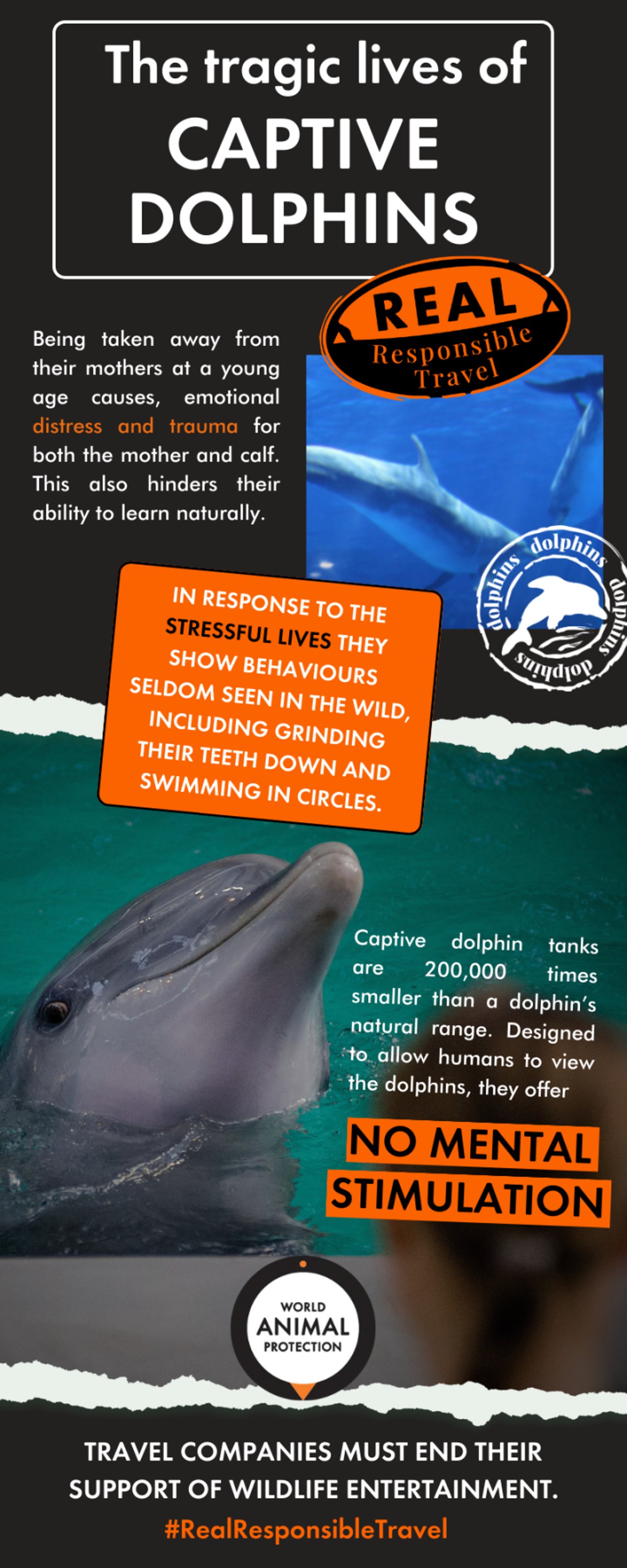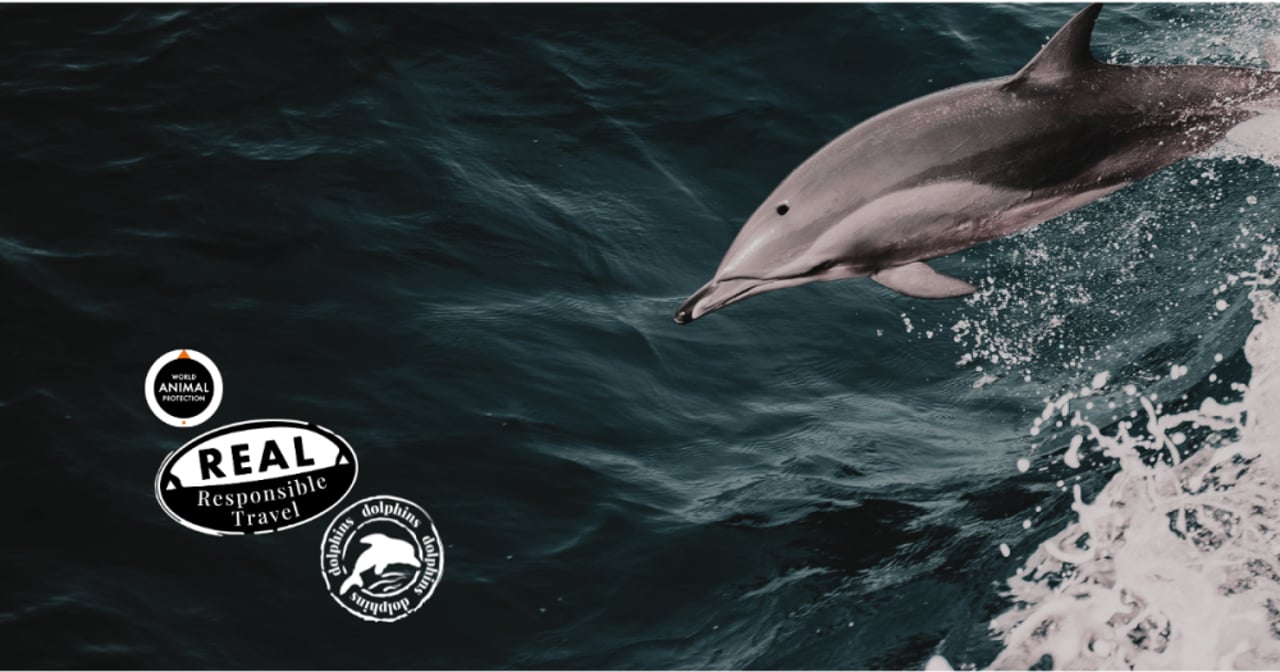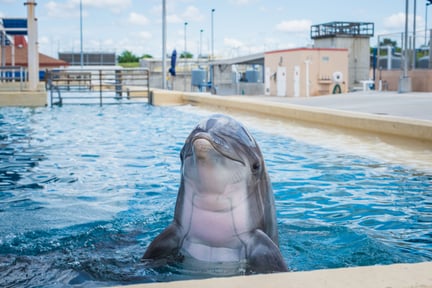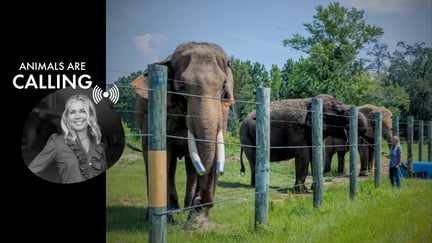
Learn about the reasons behind the suffering of captive dolphins, their behaviour in their natural habitat, and responsible tourism practices.
Dolphins are the epitome of joyful, playful animals. We talk about their smiles, curiosity, intelligence, and willingness to help other animals.
Unfortunately, the dolphins we see in captivity aren’t smiling with joy. In reality, they’re suffering in so many different ways. Over 3,000 dolphins are held captive to profit a multibillion-dollar dolphin tourism industry.
Behind every captive dolphin’s smile is trauma.
The science is unequivocal — dolphins are sentient creatures. They’re capable of feeling emotions like love, joy, and amusement. They’re also capable of feeling pain, fear, and suffering. Captive dolphins are living over 50 years in misery.
As responsible tourists, we want to see and understand these phenomenal creatures without causing suffering. But can we really get close enough to witness their joy and freedom without harm? Captivity clearly isn’t the answer, but Whale Heritage Sites and Wildlife Heritage Areas might be. More on that in a minute.
Dolphin suffering: The facts
We know that dolphins in captivity suffer greatly. Here are some of the hardships they go through:
- Dolphins used in tourism are usually bred in captivity and separated from their mothers at an early age. This traumatises both mother and calf and inhibits natural learning.
- Captive dolphin tanks are 200,000 times smaller than a dolphin’s natural range. Designed to allow humans to view the dolphins, they offer no mental stimulation.
- Captive dolphins may be ‘trained’ by depriving them of food and making them perform tricks. The standard captive dolphin diet includes frozen fish, depriving dolphins of their natural hunting behaviours.
- Many captive dolphins respond to their stressful lives with behaviour seldom seen in the wild, including grinding their teeth down, bobbing their heads, and swimming in circles.
- Captive dolphins can live for over 50 years, typically spending their whole lives in traumatic conditions.
Understanding the true nature of dolphins in the wild
To understand why dolphins suffer so much in captivity, we need to know how they behave in the wild. Here are some important facts highlighting why dolphins can only ever thrive in the wild.
Dolphins are emotional and empathetic creatures
We’ve all heard stories about dolphins acting with empathy and helping others, even protecting members of another species. This isn’t our imagination. There’s a huge amount of scientific evidence to show that dolphins experience a wide range of emotions, including empathy.
One paper reports evidence of dolphins going out of their way to support harbour porpoises. One example had a dolphin working with humans to help herd Harbor porpoises towards an area containing food and veterinary care. In another, a pair of dolphins helped Harbor porpoises with swimming.
Empathy and selfless helping behaviour are higher-level emotional skills. To show empathy, the dolphins need to understand the porpoises’ emotional state and be motivated to prevent them from being distressed.
Research into dolphin emotional processing has moved far beyond demonstrating that they experience a wide range of emotions. Researchers are finding that dolphins have stronger emotional reactions to seeing something negative on the left side of their bodies than the right.
In nature, dolphins have many experiences and opportunities to fulfil their emotional needs. In captivity, those emotional needs simply cannot be met.
Dolphins communicate their emotions through various body postures
Dolphins are highly communicative animals. They often communicate their emotions through body language. For example, a frustrated, angry, or aggressive dolphin often twists its body into an S-shape. They will also slap their head, tail, or the underside of their body against the water.
In contrast to these fast, strong motions, a happy or positive dolphin will usually swim slowly close to other dolphins in their pod. This swimming will often be synchronised between several dolphins. They might also rub their pectoral area on each other or other surfaces.
Close, synchronised swimming in dolphins is known as social swimming. Although slow social swimming is almost always positive, fast social swimming and swimming in circles can be positive or negative, depending on the context.
Wild dolphins can also express their emotions to others. In captivity, they don’t have the space to communicate effectively and often have no other dolphins to communicate with.
Captive dolphin behaviours doesn’t match with wild or natural activity
Dolphins in captivity don’t just struggle to communicate. Some of their behaviours even change meaning. Wild dolphins blow doughnut-shaped bubbles to show frustration or when they’re in a neutral situation. A captive dolphin will show the same behaviour in response to something positive.
We can’t know exactly what this ‘means’ to the dolphin, but it’s a clear sign that being in captivity changes dolphins’ emotional behaviour, and certainly not for the better.
Dolphins add intrinsic value to our oceans and should be protected and celebrated within their natural habitat.
Dolphins communicate through sounds as well as body language.
Dolphins might communicate extensively through body language, but they also use vocalisations and sounds to show their feelings and even their own identity.
When wild dolphins catch prey, they produce a ‘victory squeal’, which researchers believe is an expression of pleasure.
Each dolphin has a unique whistle that identifies them to other dolphins. They use those whistles to announce themselves and communicate their emotions.
Captive dolphins are generally kept in noisy conditions with loud music. This noise pollution is made more stressful due to the amount of time captive dolphins are coerced into spending at the surface, closer to the noise sources.
Dolphins form societies
There’s a reason that so many facts about wild dolphins focus on their ability to communicate. It’s because they’re incredibly social animals that form communities and have social roles. Any social animal needs to be able to communicate effectively with other members of their society.
Dolphins work together to achieve difficult tasks, like rearing offspring and rounding up shoals of fish. Surprisingly, there is even some evidence that they gossip!
Captive dolphins simply don’t have the opportunity for the level of social interaction they need to thrive.
Dolphins learn from each other
One of the reasons that dolphins are so popular for captive entertainment is that they are incredibly intelligent. They can learn basic language using symbols and even recognise themselves in the mirror. This makes them easy to train to perform tricks to amuse humans.
In the wild, this intelligence would be used to problem-solve, maintain their pod's well-being, and drive their characteristic inquisitiveness. For captive dolphins, their intelligence only results in more frustration and suffering.
How Whale Heritage Sites are helping dolphins be themselves
Having learned about dolphins, no responsible tourist can justify visiting captive dolphin entertainment venues. Fortunately, that doesn’t mean you can’t experience these incredible animals for yourself.
Whale Heritage Sites are the responsible travel option for seeing wild dolphins and offer responsible tourists the opportunity to experience wild animals respectfully and sustainably.
What are Whale Heritage Areas?
Whale Heritage Sites were created by World Cetacean Alliance and supported by World Animal Protection. We’re now expanding this model to benefit a wider range of wildlife worldwide.
About Wildlife Heritage Areas
Wildlife Heritage Areas are finding wildlife-watching destinations that focus on animal welfare, conservation, and sustainability above all else. They bring together NGOs, wildlife experts, and local communities to offer guilt-free, responsible tourism that puts animals first.
Learn more about protecting wild dolphins with responsible travel
Find out more about responsible tourism and the impact of traditional animal tourism on wildlife at the World Animal Protection Blog, where we cover topics like how wild animal tourism fuels the wildlife trade and the tour operators still failing wild animals.




